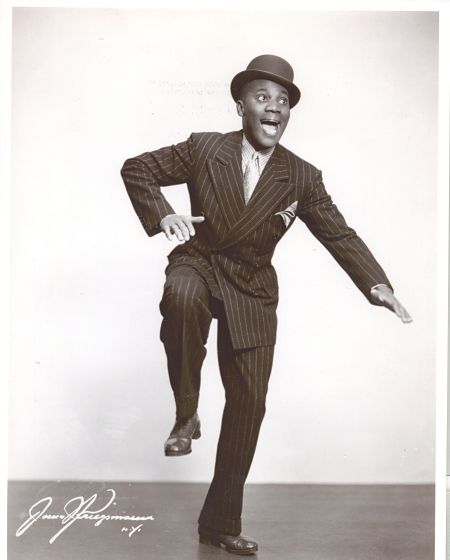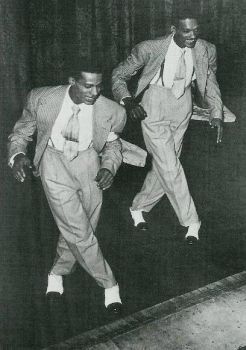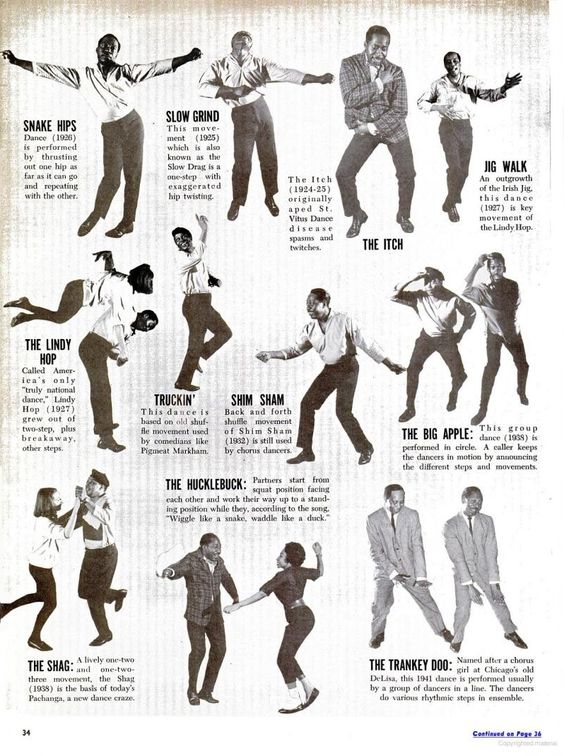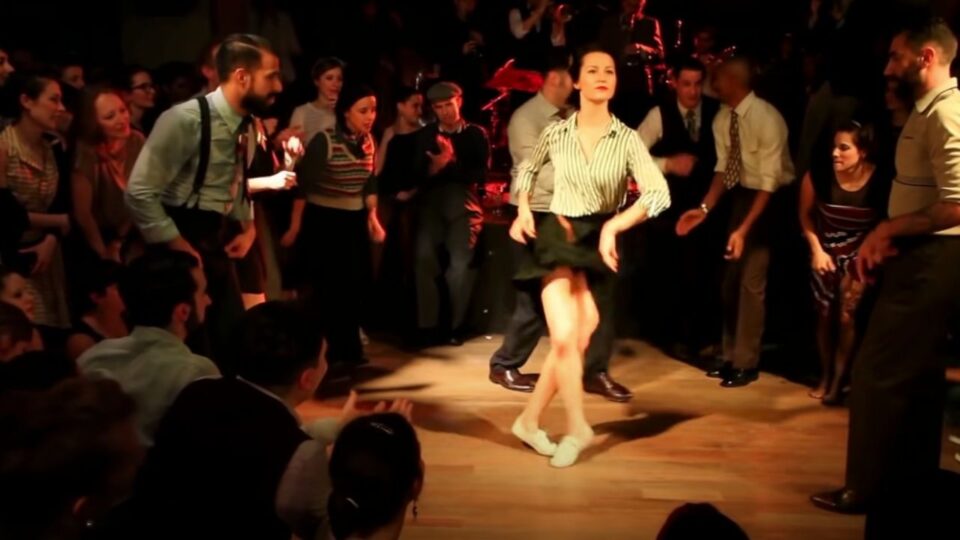Solo Jazz dance has gone through many changes over the years, but learning the origins of the classic and popular solo jazz dance steps is key to growing as a jazz dancer. Here I give a brief overview of the history of some of the most popular and still used solo jazz dance steps.
Jazz is an African – American dance form that has West African roots. Knowing the roots and history of the solo jazz dance steps is important not only in terms of appreciation of the culture and it’s creators, it will also help you discover and embody your solo jazz dance movement on a deeper level, so you understand the “why” not just the “how”.
Learning the vocabulary of classic Solo jazz dance is essential if you would like to “speak” the language of the style. It will then allow you to be able to create, grow, invent and improvise in solo jazz dance and to jazz music and its related styles. Improvisation is the identity of all jazz dance.
Groove Walk or Walking with a groove
African – Americans “refine all movement in the direction of dance – beat elegance. Their work movements become Solo jazz dance movements and so their play movements; and so, indeed, do all the movements they use every day , including the way they walk, stand, turn, wave, shake hands, reach, or make any gesture at all” (“Steppin’ on the Blues”)
Groove walk is an essential building block of solo jazz dance. Pretty much any step you do, you do with the bounce and groove. And it is already enough to start dancing to swing and jazz.
You will discover that many steps are, in fact, just a groove walk with a certain “spice” like twist of the feet or knees or with an accent, that are composed or looped (check out fall of the log, suzy Q, cross step, etc).
Polyrhythm’s in Solo Jazz
When groove walking you can experience one of the main components of African And African American black dance traditions – polyrhythm. Your body is vibrating in 4/4 feel, pulsing and bouncing to every beat. You step and produce rhythm in your feet only half time on 1 and 3. And a final touch is a snap on back beat on 2 and 4!
Author Welsh-Asante lists seven “senses”• of African dance that must be present: polyrhythm, polycentrism, curvilinearity, dimensionality, epic memory, holisticness and repetition. (African Dance: An Artistic, Historical, and Philosophical Inquiry, p.212)
To sum up, polyrhythm is created when several parts of the body produce different rhythms simultaneously. This sense can be related to all and every single step in solo jazz dancing.
•There are characteristics that I describe in full in the brief history of Black dances and senses of solo dance. Senses make up the integral composition regardless of geography or theme. Characteristics refer to the qualities of the dance itself.
Stomps in Solo Jazz
One of the most beautiful percussive solo jazz steps. As we discussed previously the body position and the intention in black dances is directed to the earth. There is no better movement than stomps to represent that connection with the ground.
“Many (African) dances are directed towards earth, acknowledging its function as a food source, but also as a resting site for their ancestors. Both nourishing food and wise ancestor knowledge feed the individual and the group; accordingly, the feet are used to maximise and emphasise the relationship between humans and the earth. Flat feet are used to shuffle, stomp, brush, graze to otherwise embrace the ground with the entire foot. Many times, when the foot is lifted, the emphasis is to return the foot to the ground as quickly as possible, maintaining contact with the earth.”
(“Hot Feet and Social Change: African Dance and Diaspora Communities”)
Kick Ball Change
In the blog post on the brief history of Black dances I talked about Syncopation & Swinging 8th note as the fundamentals of Solo jazz dance. Swinging 8th note is a name of the rhythm and it has many names and shapes in solo jazz dance. The rhythm is one, the shapes are many. Kick Ball change is one of them and is one of the most commonly used shapes in many African and Black American dances.
Propulsive rhythm is one of the characteristics of the African-American dances. It is most important to hear and keep the beat (meaning the strong note, the pulse), but it is equally important to be able to embellish it and play with it. Kick Ball change step allows you to do that. Equally this step is a beginning of more complex footwork like Shorty George, Apple Jacks, Half time break, scissor kicks and so on.
Solo Jazz dance steps & their names
Next we will be moving on to a more choreographed footwork. A step is already a little sequence, a little choreography. It is always very interesting to look at the origins of the step as well as their names.
Names of African derived dances and steps are “speaking”. Some of the steps carry names of the animals that they were imitating (Camel Walk), some carry the name of the creator (Shorty George), some just reflect the specific action (Shim Sham Shimmy).
Back in the days when there were no schools where you could go learn some tap or solo jazz dance. People were dancing on the street, practicing at homes, back stage or in the back yards. Each one was searching and creating for their own unique style and shapes. It was essential for a black dancer to be unique and recognisable, for that was the only way to get a gig or win a competition. It was a matter of getting paid and surviving.
Most of the time you would not want to teach anyone your step exactly for this reason. In fact, like Bill “Bojangles” Robinson did, you would protect your “signature” steps by “trademarking” them and shaming copycats.

Sometimes dancers would teach you their step and they would make sure you remember that it was their step, their name. That was the way they and their legacy could be remembered.
Here is how the great African American tap dancer and choreographer Cholly Atkins speaks about the steps and their names in “Class Act: The Jazz Life of Choreographer Cholly Atkins”:
“Years ago, you could sit up and look at the chorus lines, all the dance steps that they were doing. Eventually somebody would come along and lift one of those combinations out and make a dance out of it, like The Suzie – Q or the boogie woogie. I think that’s how trucking’ came about. Now, trucking’ could have originally been a step that some choreography or producer saw a kid doing on the street. Maybe it didn’t even have a name first. On the other hand, some dancer in the chorus could have made it up. Most of the time we couldn’t trace exactly, where these authentic jazz steps and dances originated. It’s clear that they have evolved as a part of black dance styles. But all we really knew was that they were here!”

Solo Jazz dance step 1 – Tackie Annie
Tackie Annie or Tack Annie is a step that was originally a tap dance step executed with brushes, shuffles and taps.
There are plenty of stories about the name origin of this typical authentic jazz move.
“Steps were normally given their names either in connection to the imitation source (animal for example) or association of the move or after the person who created them and did them better than anyone else. Shorty Snowden made up the Shorty George , and “a shuffle step known as the Tack Annie was by a pickpocket named Annie”
“Dancing, a Guide for the Dancer You Can be”
In “The World of Earl Hines”, Earl Hines, American jazz pianist, acknowledges that in Chicago during the mid – 1920s there was a woman named Tack Annie. She had a couple of girlfriends who looked after her. It appears that Tack Annie was the roughest woman he had ever seen in this life, so tough that it took several man to hold her down” (Dance, The World of Hines, p.35)
According to Harri Heinila, a Harlem jazz dance researcher, tap dancers Leonard Reed and William Bryant, who choreographed the Shim Sham, got the Tack Annie from a tap dancer called Jack Wiggins who did a thing called ‘Pull it’. He used to say to the audience: “Do you want me pull it”. The answer was usually “Yes!”.
Once he was performing to the audience, where was also his girlfriend Annie. Jack said those words again and added: “Annie next step may be tacky, but I gonna do it for you!”
Solo jazz dance step 2 – Fishtail
One of the characteristics of West – African tradition is animalistic imitations. You can definitely see it in many moves. Fishtail is one of them. The rich verbal vocabulary of vernacular black jazz dance movement as well often reflects the movement character and body usage, and in the face and hands. Look at the names of the steps such as Wing, Stomp, Fishtail, Black Bottom, Snake Hips and so on.
You can see Al Minns dancing fish tail in “The Spirit Moves” series:
Solo Jazz dance step 3 – The Charleston
Read the full article on History of the Charleston.
The Charleston dance had possibly the greatest influence on the American culture. Enslaved Africans brought it from Kongo to Charleston, South Carolina, as the Juba dance, which then slowly evolved into what is now known as Charleston. / ../ In African, however, the dance is called Juba or the Djouba. The name Charleston was given to the Juba dance by European Americans Africanisms in American Culture, p.52
The craze of the 20’s went into full swing when the choreographer Elida Webb Dawson, African- American dancer and choreographer at the Cotton Club in Harlem, introduced the Charleston in Runnin’ Wild (1923) – an American black Broadway musical comedy show. Her set of movements was accompanied by “The Charleston” tune by James P. Johnson and Cecil Mack. The characteristic Charleston beat, which James P. Johnson said he first heard from Charleston City dockworkers, incorporating the clave rhythm.
During “The Roaring Twenties”, Josephine Baker, famous black American dancer, introduced this dance to European audiences.
Charleston step has it’s eras and it changed with time and place. It started as a step with twists in a lazy sort of way , then transformed into a crazy wild kicking move.
Here is an alternative thought to the origins of The Charleston step and dance from Cholly Atkins from “Class Act: The Jazz Life of Choreographer Cholly Atkins”
“Take the Charleston step, for example. We think it came up from South Carolina with its name intact and was introduced in a Broadway show, Running’ Wild. That’s what I was always told. But see, this thing is really complex because of all the interweaving and overlapping that happened. There was so much cross fertilisation from one venue to another – from the street , to the theatre, to the dance hall, to the nightclub. /…/ All of those dances came right out of the authentic jazz and were choreographed for stage”
Solo Jazz dance step 4 – Fall Off The Log
“Fall off the log (falling-off-the-log / falling off a log)- twisting movement consisting of shuffles and the alternate crossing and recrossing of one foot over the other, the body leaning sideways – “Brotherhood in Rhythm”
Falling-off-a-log is as well described as a step similar to Buffalo tap dance step but with a leaning pause added). It is a so- called travel step. The main rhythmic idea of the step is accentuating the backbeat on the kick. In that moment the whole body gravitates to the ground. The art of mimicry and imitation is strongly developed in black dances. Falling off a log imitates this actual process of the falling.
Solo Jazz dance step 5 – Suzy Q
Susie Q, Suzie Q or Suzy-Q is a vernacular dance step, with a shuffling and sliding step (as well performed in tap) that was introduced at the Cotton Club in 1936. The origin of the name “Suzie Q” is uncertain. There is a the reference to the name in the 1936 song Doin’ the Suzie-Q by Lil Hardin Armstrong
You can see Suzie Q performed by Al Minns, Pepsi Bethel, Leon James, Ester Washington, Sandra Gibson in The Spirit Moves film:
Solo Jazz dance step 6 – Camel Walk
“The dances of the enslaved population were often named and choreographed after the movements of animals”
(Ring Shout, Wheel About)
Camel walk is one of them. It is a solo jazz dance step that is closely resembling the knock – kneed gait of a camel.
Solo Jazz dance step 7 – Boogie back
Here is an amazing solo jazz dance step that has several layers to it. You can make it with loads of body movement and vibration and as well try to swing it by adding the already familiar kick ball change, swinging 8th step. The intention of the step is toward the ground, the earth or to the feet of other dancers, to support the fire and energy in the jam circle or cypher.
Solo jazz dance step 8 – Shorty George
The Shorty George, a signature step of Lindy hop and jazz, was named after an African -American jitterbug and Lindy hop dancer “Shorty” George Snowden (4 July 1904 – May 1982) in the 1930s. He could do this step underneath his partners legs.
Snowden was an acclaimed dancer at the Savoy Ballroom. The story is interesting. George Snowden was a short man, only about 5 feet tall and he had quite an impressively tall dance partner called Big Bea It was their “thing”, the feature. They really crafted their dance art around his height. George would jump in a split to have Big Bea turn under arms.
Shorty is often given credit for giving Lindy Hop its name. After Charles Lindbergh’s (known as “Lucky Lindy”) as the newspapers said “hopped” across the Atlantic, there was a charity dance-marathon in New York City in 1928. A reporter saw Snowden break away from his partner and improvise a few steps. “What was that!?” he asked. Snowden thought for a few seconds and replied, “I’m doin’ the Hop…the Lindy Hop”. And so the name stayed. (source Savoy Style)
In jazz dance only when the film production became more popular the forms and style started to be documented.
Solo Jazz dance step 9 – Applejack
Apple Jacks, Applejack (dance) is a jazz dance step developed in 1940’s
“Applejack (1930s–1950s) liquor, especially bootleg liquor, so called because apples were used as the main ingredient. Applejack n. (1950s–1960s) all-purpose tag name for dances”
(Juba to jive: the dictionary of African-American slang, p.10)
Solo Jazz dance step 10 – Half Break
Rhythm break steps are certainly a characteristic of the African dance tradition. In Tap and jazz half break is a step on 4 beats and starts on a backbeat. Break steps are the ones that are normally performed at the end of the jazz phrase or form, to seal or finalise the phrase. The success to perform this step is release. Remember, the great African American composer Duke Ellington said “In jazz we don’t push it, we let it fall”. Keep it in mind when doing ball change, which is a swinging 8th note. To syncopate it needs a drop. All the rhythm break steps want to gravitate to earth.
Solo Jazz dance step 11 – Full Break or T.O.B.A break
Another name for this step is T.O.B.A. break. T.O.B.A. break was a part of Shim Sham live choreography created by Leonard Reed and Willie Bryant around 1927. The break is an 8-count step and therefore carries a “second” name “full break”.
T.O.B.A. stands for Theatre Owners Booking Association. It was a black vaudeville circuit that developed and promoted black talent and catered to black audiences in the 1920’s. Among black dancers the acronym TOBA was read as “Tough on Black Actors”.
Here is Chester Whitmore, American dancer, musician and choreograoher, protege of Fayard Nicholas (of the Nicholas Brothers), showing and talking about versions of T.O.B.A break:
Solo Jazz Dance steps as improvisational “break”
“Improvisation, for the black idiomatic dancer … is the key element in the creation of vernacular dance. From the 19th century cakewalk through the Charleston of the twenties and the Lindy hop of the thirties and forties, Black dancers inserted an improvisational “break” that allowed couples to separate at various points so that they could have maximum freedom of movement”
(The Routledge Dance Studies Reader, p.232)
It is important to mention that couple dances are a derivative from the European tradition in African American dances like cakewalk, Charleston, Lindy hop, shag, foxtrot, etc. There doesn’t seem to be any tradition of close embrace dances in west Africa. Dancing apart allows for the better dialog with the music.
However through improvisation, experimentation and imitation the early African – American inventors of the Lindy hop created a style that was uniquely their own, finding room for improvisation and exploration in a couples dance. While also allowing lots of space for break aways and solo moments to express your individuality fully.
This emphasis on solo dancing also becomes essential when we speak about Jam Circles and Jams, where dancers are encouraged to enter a circle of people, and dance at usually a very fast tempo to show their virtuosity, style and individual expression, again rooted in the African traditions of ring shouts and circles.
“Ain’t what you do, it’s the way that you do it”
No matter what steps you are doing the most important in jazz is style, musicality and personality. “Ain’t what you do, it’s the way that you do it” as the famous song goes. Jazz is an alive organism, it call for innovation, freshness and creativity. Knowing classic steps, their roots and origins is essential to move forward.
“A good dancers is the one who converses with music, clearly hears and feels the beat, and is capable of using different parts of the body to create visualisations of the rhythm”
(Steppin’ on the Blues, p. 15)
To me this video of Albert (Al) Minns and Leon James partying just says it all. Let’s face it, who wouldn’t want to own the party like these two incredible African American dancers.
As always this is a brief summary of some classic Solo Jazz Dance steps, there is so much to learn so get reading on the resources I citied below.
When you are learning solo jazz dance online, or taking online jazz dance classes, this is fundamental to your learning, and can only help to improve it. I know you may ask Ksenia is this necessary? or Ksenia is it more important I spend time on my dancing than learning? For me they come together, learn to dance online, then read books on the train, and practice in the office or near by. Take local classes nearby. All of this will help you on your journey to becoming an amazing solo jazz dancer!
Sources:
- Steppin’ on The Blues The Visible Rhythms of African American dance by Jacqui Malone
- Ring Shout, Wheel About: The Racial Politics of Music and Dance in North American Slavery By Katrina Dyonne Thompson
- Hot Feet and Social Change: African Dance and Diaspora Communities edited by Kariamu Welsh, Esailama Diouf, Yvonne Daniel
- Tappin’ at the Apollo: The African American Female Tap Dance Duo Salt and Pepper By Cheryl M. Willis
- Class Act: The Jazz Life of Choreographer Cholly Atkins by Cholly Atkins, Jacqui Malone
- Jazz Dance: A History of the Roots and Branches edited by Lindsay Guarino and Wendy Oliver
- Choreographing Copyright: Race, Gender, and Intellectual Property Rights in American Dance By Anthea Kraut
- African Dance: An Artistic, Historical, and Philosophical Inquiry edited by Kariamu Welsh-Asante
- The Routledge Dance Studies Reader edited by Alexandra Carter, Jens Giersdorf, Yutian Wong
- Meaning in Motion: New Cultural Studies of Dance by Jane Desmond
- Africanisms in American Culture edited by Joseph E. Holloway
- The Jazz Cadence of American Culture edited by Robert G. O’Meally
- Juba to jive: the dictionary of African-American slang by Clarence Major
- THE SPIRIT MOVES: A History of Black Social Dance on Film Screener by Mura Dehn in 3 parts:
- Part 1 Jazz dance from turn of the century ’til 1950 (44 min.)
- Part 2 Savoy Ballroom of Harlem, 1950’s (34 min.)
- Part 3 pt. 2: Postwar era, 1950-1975 (40 min.)
Written by Ksenia Parkhatskaya
Researched by Ksenia Parkhatskaya
Edited by Ksenia Parkhatskaya





